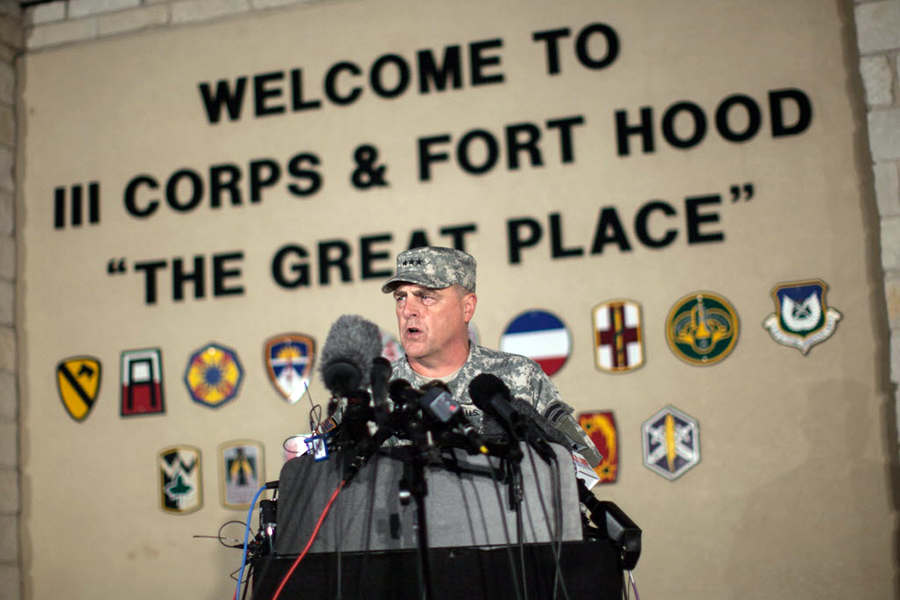Fort Hood officials: Base lacked system to ID threat before 2014 rampage
Loading...
| FORT WORTH, Texas
Fort Hood officials say there were no clear warning signs before a soldier went on a rampage last April that left four dead and 16 wounded, according to a U.S. Army report released Friday.
There was no indication that Spc. Ivan Lopez would go on a two-block shooting spree before killing himself on April 2, the report concluded. It also said the chain of command would have had difficulty recognizing any personal problems leading up to the attack, because risk assessment relies on self-reporting and Lopez had been dishonest with his supervisors.
"In the absence of a system capable of identifying (Lopez) as a threat, and because the unit was unaware and unable to address the variety of stressors in (Lopez's) life, Fort Hood was not able to prevent the shooting," lead investigator Lt. Gen. Joseph E. Martz said in the report.
No single factor prompted the incident, the report said, despite Army investigators' previous findings that Lopez had been in an argument over a leave request.
Investigators have said the 34-year-old Iraq War veteran was undergoing treatment for depression and anxiety while being evaluated for post-traumatic stress disorder, but was not considered "likely" to commit violence.
He had recently lost two family members and faced financial difficulties, officials said. A spokesman for Lopez's family said in April that he was upset he was granted only a 24-hour leave — which was extended to two days — to attend his mother's funeral in Puerto Rico. Army spokesman Lt. Col. Donald Peters said it is "absolutely untrue" that he was granted only a day's leave, instead getting six days' leave.
The report said the deaths and financial problems could have had a cumulative effect on Lopez's emotional state.
"Since risk assessment tools depend on self-reporting, they are subject to the Soldier's willingness to identify risk factors accurately," the report said, adding that Lopez could sometimes be "misleading or deceptive."
The Army previously said it was logistically impossible to stop and search all 80,000 people who work on the sprawling base every day.
Recommendations in the report, for which more than 160 witnesses were interviewed, included exploring whether soldiers should register privately owned weapons with their commanders. Lopez flashed his badge to enter the base April 2 and carried out the shooting with .45-caliber Smith and Wesson that was not registered with the Army base.
Lopez's shooting occurred nearly five years after Army psychiatrist Nidal Hasan gunned down 13 people at a medical readiness building at Fort Hood. Hasan carried a high-powered pistol and several cartridges of ammunition into the building under his green Army fatigues and opened fire for several minutes.
An FBI review found that authorities missed several messages Hasan had sent to a Yemen-based cleric tied to terrorist activity. Evidence presented at his trial two years ago included testimony that he had trained to quickly fire the pistol at a nearby gun range.
Fort Hood officials remain committed to "doing what's necessary to ensure the safety and security of all personnel," the Army base said in a statement Friday.







